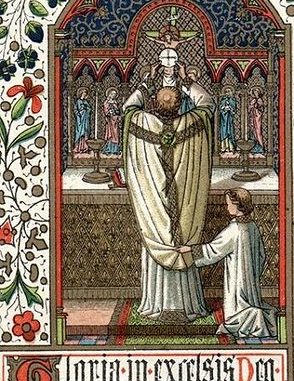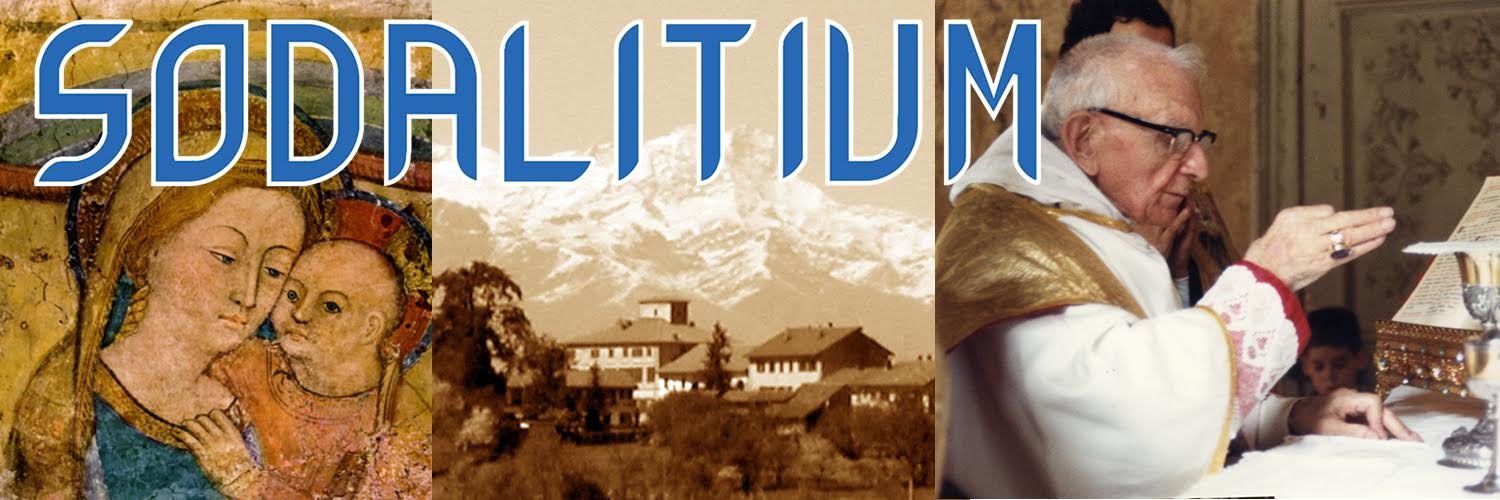
On July 16th, 2021 the Apostolic Letter Traditionis custodes was released in the form of “motu proprio” along with a message by the current occupant of the Apostolic See to his Bishops (the above-mentioned “guardians of Tradition”). By means of this Letter, promulgated with unusual haste only through publication on the Osservatore Romano, all the concessions granted by Bergoglio’s predecessor in the “motu proprio” Summorum Pontificum cura on 7th July, 2007 have been revoked. As far as this new “motu proprio” is concerned, the considerations and conclusions we expressed in the wake of the previous one, now partially abrogated, are still valid; they can be read here: https://www.sodalitium.biz/comunicato-riflessioni-sul-motu-summorum-pontificum-2/
These two documents appear to be mutually opposed, and perhaps not only in regard to pastoral choices, since one revokes the concessions granted by the other, but also on a matter of principle: that is, to know if the Roman Rite would have two liturgical forms (the ordinary and the extraordinary, to use the expression of the document issued in 2007), or if its unique expression is that of the reformed rite, as the recent document states, echoing the declarations made by Paul VI in the consistory of May 24, 1976.
However, the two documents have a fundamental point in common, that is, both the m.p. Summorum Pontificum and the m.p. Traditionis custodes require those who use the Roman missal of 1962 (of John XXIII) to recognize the legitimacy, validity and sanctity of the liturgical reform in application of the Second Vatican Council. On this point, the two documents differ only in the following aspect, that is, the m. p. issued in 2007 assumes the acceptance of the Council and the liturgical Reform by those who will make use of its concessions, while the m. p. issued in 2021 revokes the above-mentioned concessions because it claims to ascertain a widespread non-acceptance of the very same Council and its liturgical Reform.
Now, only one of the following two things is plausible: either those who make use of the Roman missal (of 1962) recognize the authority of the occupants of the Apostolic See from 1965 onwards and, consequently, the legitimacy, validity and holiness of the reformed missal, as well as the magisterial value of the documents of Vatican II, or not.
In the first instance, it is not clear why they find it difficult to celebrate with the reformed rite or attend it, in a spirit of obedience to whom they consider to be Vicar of Christ and Successor of Peter, who, among other things, has wished that everyone will end up adopting the missal of Paul VI; a rite of the Church, promulgated by the authority of the Church, on the other hand, can only be legitimate, valid and holy.
In the second instance, the m.p. Traditionis custodes would be right in pointing out the irreconcilability of the two rites, and thus priests and faithful to the Catholic tradition should consistently reject any concession based on the acceptance of Vatican II and the new rites, and should not have recourse to both the documents, neither that of 2007 nor the current one.
Now, the new rite of the Mass and of the sacraments was written explicitly according to the spirit of the ecumenist movement endorsed by Vatican II: that is, it aims not at defending the truths of the Faith, especially the sacrifice of the Mass, the priesthood, the Transubstantiation, but rather at going out to meet those who reject these truths of faith in Martin Luther’s footsteps, who has been praised by the last occupants of the Apostolic See, in particular by the author himself of Traditionis custodes; the new rite cannot therefore be a rite of the Church, nor come from a legitimate authority of the Church.
In short, the key to everything consists in recognizing the legitimacy of Paul VI who promulgated the “apostolic constitution” Missale romanum. Once recognized this “constitution”, as the Society of Saint Pius X itself does (the Society, paradoxically, has been benefited as never before by the author of Traditionis custodes), inevitably follows the need to recognize the legitimacy, validity and sanctity of the liturgical reform as a whole, along with the need, beyond the tricks of the canonists, to conform to the provisions of m. p. Traditionis custodes.
In the light of all these considerations, we conclude:
The m. p. Traditionis custodes, as well as the m. p. Summorum Pontificum and the “apostolic constitution” Missale Romanum, are not documents of the Church. Therefore, they are not owed obedience or disobedience, nor should they be bypassed, but simply ignored.
The m. p. Traditionis custodes, while not in accordance with the law and doctrine of the Church, is nevertheless an outstanding testimonial of the profound aversion of the neo-modernists and the pro-Lutheran ecumenists against the immemorial liturgy of the Roman Church, thus demonstrating the incompatibility of the two rites: the reformers want to make the Catholic rite disappear, while Catholics must obtain from God and from a legitimate Pontiff that the reformed one be expelled from our churches and our altars.
“You cannot serve two masters”. The m. p. Traditionis custodes confirms the impossibility of being and celebrating in communion with whom who has the suppression of the Mass and the sacraments of the Church as its declared purpose.
“You cannot serve two masters”. The m. p. Traditionis custodes could involuntarily exert the beneficial effect of opening the eyes of doubters and putting an end to “traditional” celebrations that are often doubtfully valid and, in any case, always objectively deceptive, given the assumption of the acceptance of Vatican II and the liturgical reform.
The priests of the Mater Boni Consilii Institute will therefore continue regularly to celebrate the Holy Sacrifice of the Mass and to administer the Holy Sacraments without being in communion with the material but non-formal occupants of the Apostolic See, by following the venerated liturgical books of the Roman Catholic Church promulgated by Pope Saint Pius V and his successors, and according to the rubrics of Saint Pius X.
Verrua Savoia, 21st July 2021
